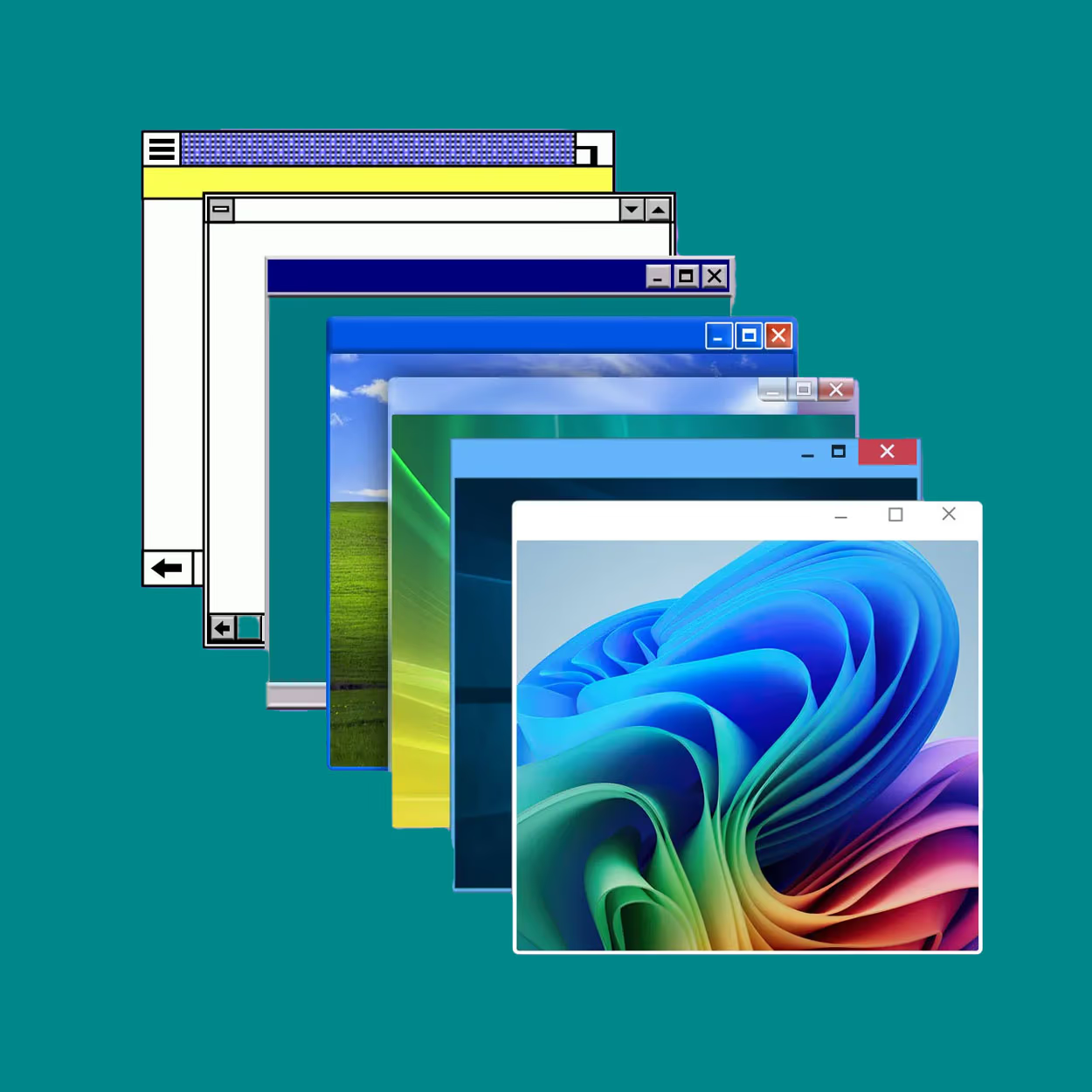By the mid-2000s, Microsoft faced a challenge that didn’t fit its traditional business model. Software no longer needed to be installed from disks—it was beginning to live in the browser. Anxiety grew within the company: the stable business built on Windows and Office could buckle under pressure from new players offering free, cloud-based solutions. Transitioning to a service model meant abandoning old principles, rethinking product architecture, and risking revenue—all in exchange for a chance to stay in the game.
Two decades later, Microsoft stands at another turning point. Only now, the question is not where the software will run—on a local machine or in the cloud—but who will operate it: a human or artificial intelligence. Over its 50-year history, the company has missed major trends and made strategic missteps. But it is precisely its ability to rethink itself in time, rebuild its infrastructure, and return to the center of the tech stage that defines its place today.
In 2005, a sense of unease began to grow within Microsoft’s leadership. Although Windows and Office continued to generate stable profits, Chief Software Architect Ray Ozzie drew his colleagues’ attention to a new threat that could shake the foundations of the company’s business model. In his now-famous memo, published by CNET, he described the emergence of a new paradigm—advertising-supported services and software. In his view, this model could radically transform the way innovation was created, distributed, and monetized—both at Microsoft and across the industry.
Ozzie insisted on the need to adapt to the coming changes, which centered on cloud technologies and web-based services. He warned that without a course correction, Microsoft risked falling behind. His concerns were soon validated—Google began promoting Google Docs as a free alternative to Office for individual users and a paid one for businesses.
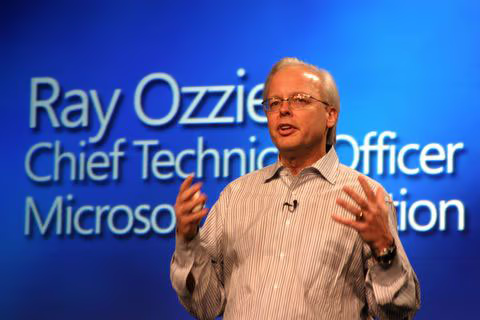
Ray Ozzie.
However, the idea of moving Office to the cloud sparked serious debate within the company. Such a move completely overturned the traditional sales model and could negatively impact short-term profits. According to Executive Vice President Rajesh Jha, it was a bold and unpopular decision. Despite resistance, then-CEO Steve Ballmer backed the initiative, and the company began the process of transitioning Office to the cloud. In 2010, Microsoft officially launched the Azure platform.
The beta release of Office 365 proved to be a real challenge. As Jha recalls, the initial steps in adapting Office for the web environment were extremely difficult. The programs had been built for a completely different architecture and had to be transformed and scaled for cloud realities. He remembered how Ballmer promised support and urged the team to see the project through.
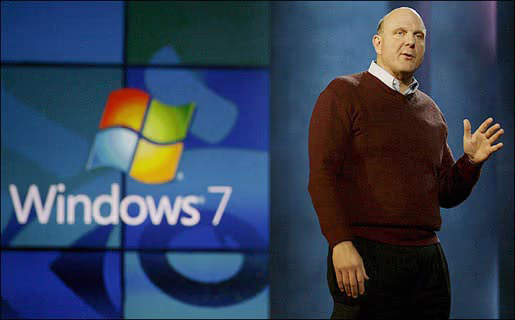
Steve Ballmer.
This period marked yet another turning point for Microsoft—one of many the company has navigated over nearly half a century. At times, its direction shifted dramatically, accompanied not only by major successes but also by painful failures. The launch of Windows 8, the flop of the Zune media player, and its failure in the smartphone market still elicit a sense of discomfort among some employees. Yet it was precisely the willingness to experiment and the drive to bring something new that fueled the company’s progress.
According to Steven Bathiche, head of Microsoft’s Applied Sciences Group, the ability to adapt to change is what has allowed Microsoft to maintain its leadership. He emphasized that for a company with such a long history, operating in an industry where everything moves so fast, that’s a rare quality.
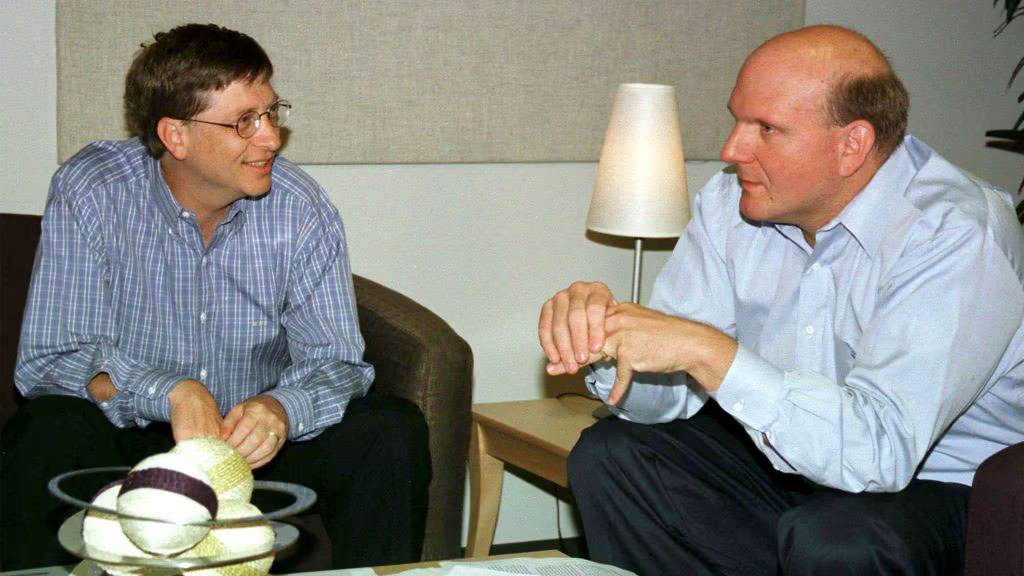
Bill Gates and Steve Ballmer.
Microsoft reached its 50th anniversary with a sense of confidence. Founded in 1975 by Bill Gates and Paul Allen under the name Micro-Soft, the company was committed from the beginning to creating widely accessible software. Its first major success in this direction was the Altair BASIC interpreter, written for the Altair 8800 computer. Microsoft didn’t build the hardware, but provided the software—an approach that would later define its strategy with MS-DOS, Windows, and Office.
Building these platforms required a great deal of experimentation. The timing wasn’t always right. For example, Microsoft introduced SPOT “smart” watches long before the Apple Watch, and tablets running Windows XP came years before the iPad. One of the most painful missteps was in the mobile market. Despite years of effort and experiments with both hardware and software, the company failed to mount a serious challenge to the iPhone. The acquisition of Nokia turned out to be an unsuccessful attempt to catch up.
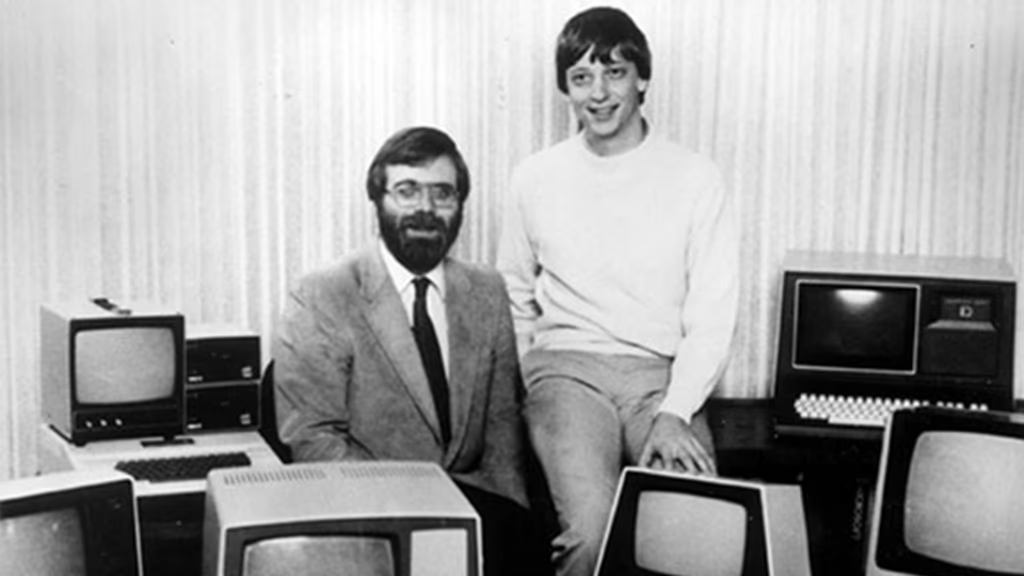
Microsoft founders Bill Gates and Paul Allen, 1975.
Nevertheless, as company employees note, it was these numerous attempts that largely laid the groundwork for future success. Steven Bathiche recalled how, in his early years, he participated in so-called "invention sessions" with Bill Gates. He would bring Gates prototypes of new ideas—and saw the enthusiasm with which Gates welcomed such initiatives.
Some of those experiments became the foundation for touch interfaces and cloud technologies that would power Microsoft Surface and other devices. The company’s experience with both hardware and software also enabled it to develop the Xbox—one of its most successful products combining software and hardware. Originally called the Windows Entertainment Project, it was created by the DirectX team as a response to the growing popularity of Sony’s PlayStation 2.
Some of Microsoft’s initiatives went through long transformations before becoming part of successful products. One such example was the Cortana voice assistant, developed as an alternative to Siri and Alexa. Although the project never gained widespread adoption, it laid the groundwork for technologies later used in Windows and Surface devices. According to Bathiche, Cortana required the development of new approaches to local data processing and optimization for ARM processors.
The work initiated under Cortana—from assistant adaptation to launching Windows on ARM chips—later formed the basis of the Surface Pro X and the first AI features in Windows. Bathiche believes these efforts laid the foundation for Microsoft’s future achievements.
This path of trial and error, accompanied by the accumulation of technological expertise, explains why current CEO Satya Nadella is now making such a confident bet on artificial intelligence.
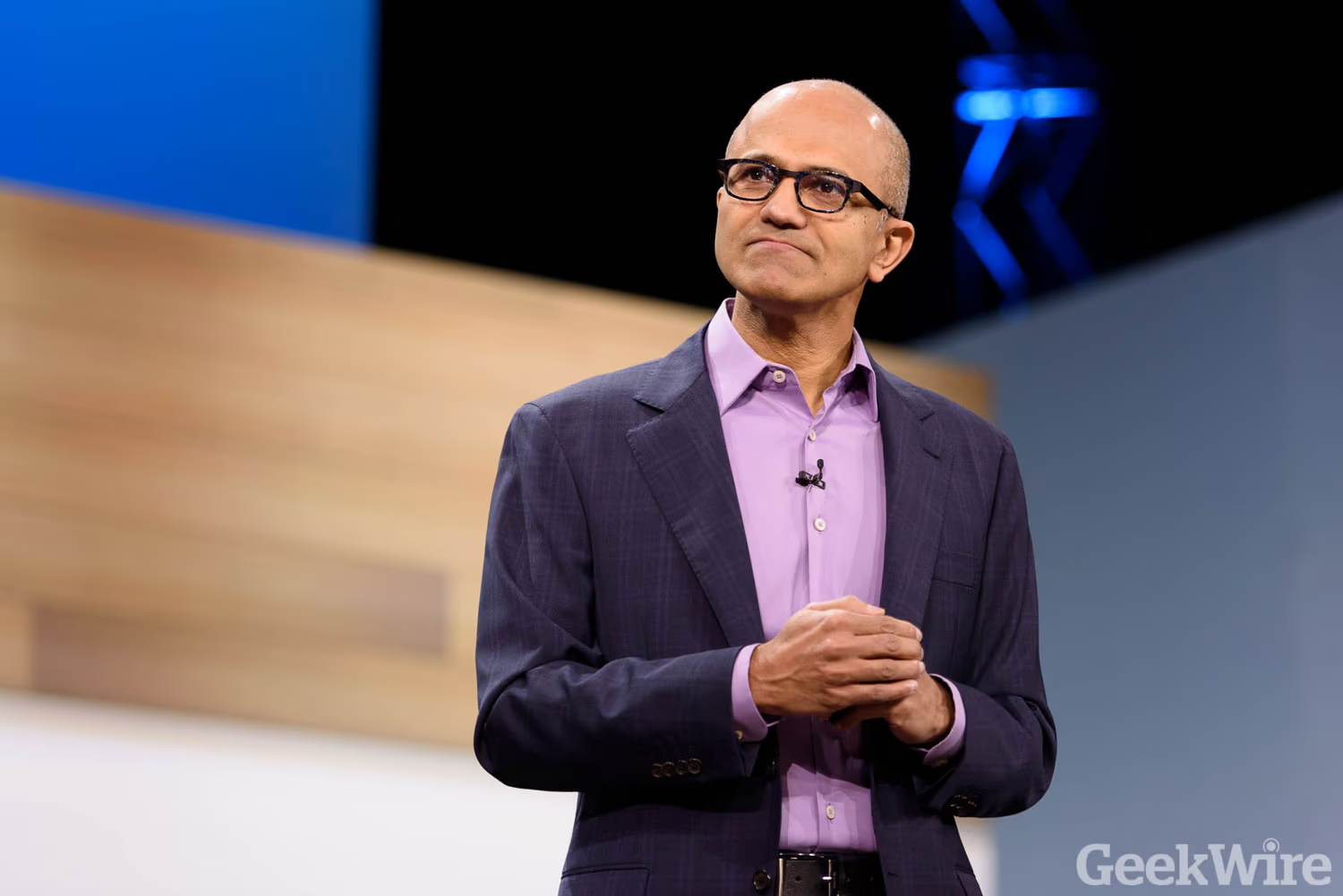
Microsoft CEO Satya Nadella.
One of the key steps in this direction was Microsoft’s strategic partnership with OpenAI. In 2019, the company invested $1 billion in the research lab, becoming the primary provider of cloud infrastructure for its projects. After the launch of ChatGPT in 2023, Microsoft deepened the partnership by investing an additional $10 billion.
These investments became a catalyst for the company’s AI transformation, especially at a time when Google was leading in scaling its AI efforts. Bathiche believes that the new AI era only reinforces the trends that have enabled Microsoft to harness technological shifts to create new use cases and device formats.
He noted that computers initially ran only a single program; then came Windows—a universal layer of interaction between developers and hardware. The internet followed, transforming how software was distributed. Now, in Bathiche’s view, the era of "agents" has arrived—autonomous intelligent programs that act on behalf of the user.
In the past, Microsoft created software like Word that was compiled and distributed in a single form. Today, the company is aiming to build dynamically adaptive software—systems that adjust to specific tasks and user contexts.
Bathiche argues that the new race is about generating code tailored to each individual. Everything related to AI agents, he says, centers on deep personalization, understanding, and precise tuning to the user’s needs.
The surge in AI demand has created an unprecedented need for computing power. Azure AI teams must constantly adapt to new models and hardware solutions. One recent example is the rapid integration of DeepSeek’s R1 model into the Azure AI Foundry platform.
Asha Sharma, Corporate Vice President of AI Platform, explains that the goal of Azure AI Foundry is to evolve into a kind of "operating system" for every agent. All systems developed over the past 50 years must now operate in the context of AI.
Microsoft envisions a future in which AI agents become digital coworkers and co-creators. According to Sharma, many of the solutions developed in the past will serve as the foundation for a "digital workforce." It’s not just about interfaces that are understandable to humans—it’s also about building ones machines can work with effectively.
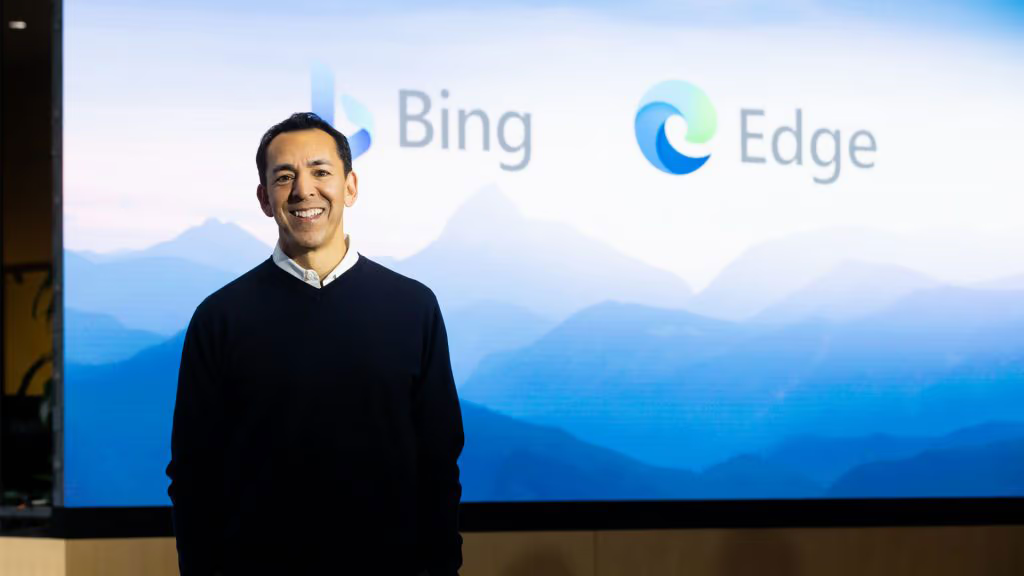
Microsoft announces new AI-powered Bing search engine and Edge browser, February 7, 2023.
Part of Microsoft’s success in the AI race depends on its own models and its ability to leverage external developments. Recently, the company introduced the Muse AI model, built using the game Bleeding Edge, to generate gameplay. Satya Nadella emphasizes the importance of such internal innovations and sees Muse as a benchmark: from foundational research to real breakthrough features, such as those found in Copilot.
Beyond digital assistants and Xbox, Microsoft is exploring more radical uses of AI in the physical world. Corporate Vice President and Managing Director of Microsoft Research Ashley Llorens envisions a future where some agents become embodied—able to act in the real environment on behalf of the user. He stresses that this applies not just to structured robot-friendly spaces, but to dynamic, semi-structured environments where people live and work. One challenge is teaching AI to understand the relationships between objects in space and time.
While AI-based robots may still sound like science fiction, Microsoft is actively exploring fields like robotics, medicine, and quantum computing. After missing the mobile market wave, the company is especially alert to emerging shifts—aiming not to miss the next big technological transformation.
Microsoft’s ability to adapt to change and anticipate the future—whether through Gates’ vision or Ozzie’s foresight—has been one of its defining traits over the past 50 years. Moments of crisis pushed the company to take bold but necessary steps. And while not every bet paid off, each contributed to progress.
Today, Microsoft is going all-in on artificial intelligence. Some believe this could lead to technological singularity—a point at which AI surpasses human capabilities. What that future looks like, no one knows. But if the AI hype fades and Microsoft ends up facing a setback, as it once did with Windows Mobile, there’s every reason to believe it will adapt once again—and find a way forward.
